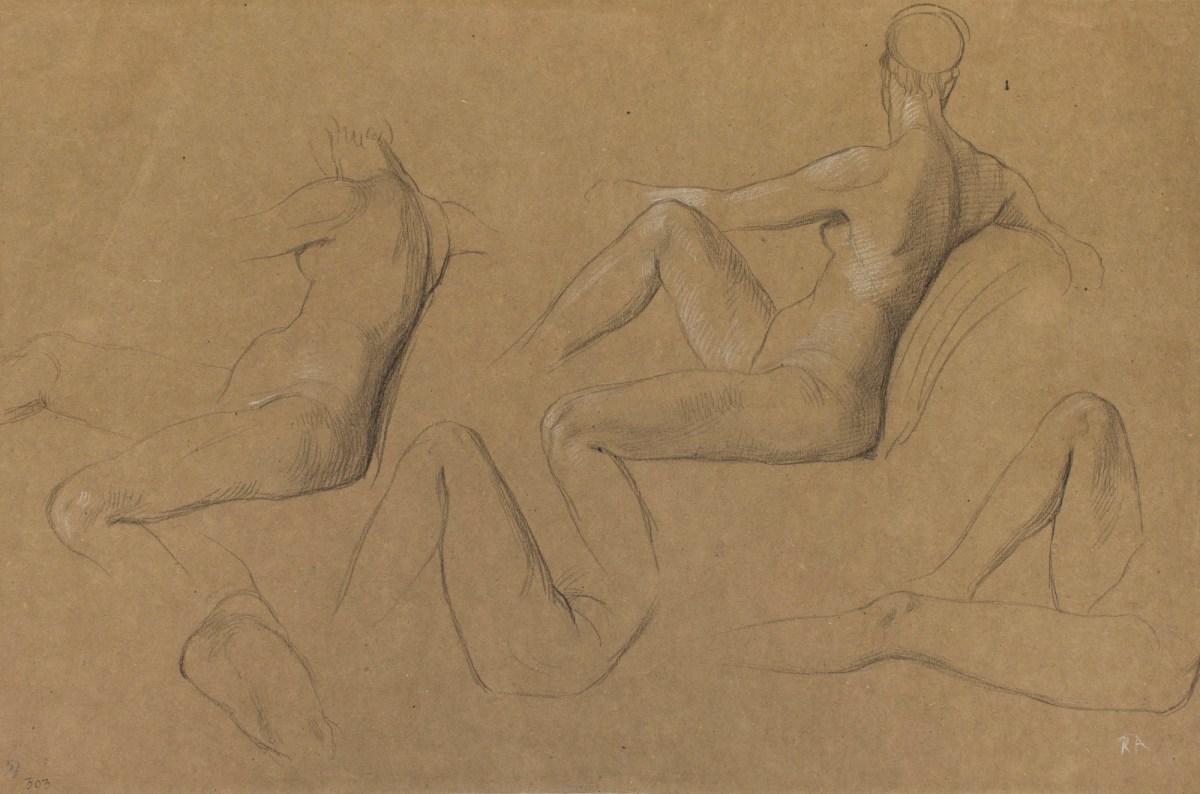
George Frederic Watts RA, Five studies of a female nude.
Black and white chalk on brown wove paper. 357 mm x 554 mm. © Photo: Royal Academy of Arts, London.
This image is not available to download. To licence this image for commercial purposes, contact our Picture Library at picturelibrary@royalacademy.org.uk
Five studies of a female nude
George Frederic Watts RA (1817 - 1904)
RA Collection: Art
The life drawings in this group depict G. F. Watts's favourite model, Mary Bartley. A housemaid at Little Holland House where Watts lived as a guest of the Prinsep family, she became known as 'Long Mary' because of her great height and was persuaded to model for Watts. Her tall, statuesque figure can be seen in many of his paintings.
Mary Seton Watts, the artist's wife, wrote: 'When painting, Signor [Watts] referred to the studies made in charcoal on brown paper from this most splendid model [Long Mary] - noble in form and in the simplicity and innocence of her nature - a model of whom he often said that, in the flexibility of movement as well as in the magnificence of line, in his experience she had no equal. Many of the studies made from her are now in the possession of the Royal Academy and at the British Museum, while some are preserved in the Sculpture Gallery at Compton. They inspired his work from the first half of the 'sixties to the end of his life. The pictures 'Daphne', 'The Judgement of Paris', 'The Childhood of Zeus' - the Eve trilogy - 'Dawn', 'Olympus on Ida', 'The Wife of Midas', are notable examples of paintings in which he referred to these studies...'.
Long Mary is said to have died in the early 1870s but Watts continued to refer to the drawings he had made of her throughout his career. They formed what he called 'the grammar of the higher language of art'. Although he made many studies of Long Mary and of other models, his general aim in painting was to portray universal figures rather than individuals and he therefore created composite poses from various different drawings and then painted from these and from memory.
Further reading:
Mary Seton Watts, George Frederic Watts:The Annals of an Artist's Life, London, 1912, Vol II, pp. 44-5
Object details
357 mm x 554 mm
Start exploring the RA Collection
- Explore art works, paint-smeared palettes, scribbled letters and more...
- Artists and architects have run the RA for 250 years.
Our Collection is a record of them.



